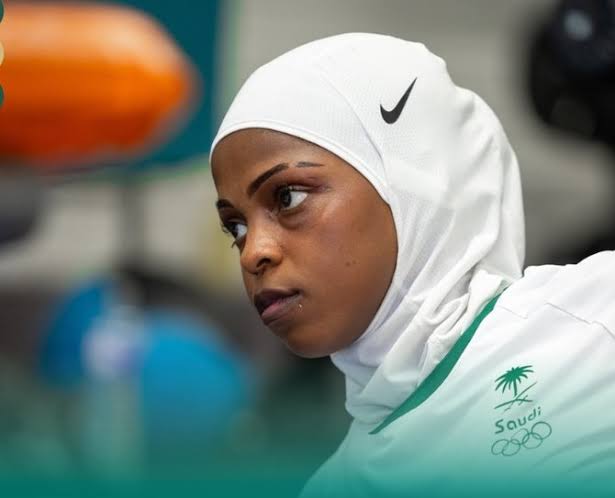In recent years, Saudi Arabia has witnessed a transformative leap in the empowerment of women in sports, and standing tall among the new generation of trailblazers is Hiba Mohammed Malm. At just 23 years of age, Malm has not only redefined what it means to be a female sprinter in the Kingdom but has also become a beacon of hope and inspiration for young Saudi athletes dreaming of global recognition. Her rise to prominence is not just a story of speed and athletic talent—it is a testament to perseverance, national pride, and the limitless potential of Saudi women in international arenas.
Breaking the Barrier at Basra
The turning point in Hiba Malm’s athletic career came at the 2024 West Asian Championships in Basra. It was on this stage that she etched her name into the annals of Saudi sports history. Competing in the fiercely contested 100-meter sprint, Malm clocked an impressive time of 12.24 seconds, becoming the fastest Saudi woman of all time. The record-breaking run didn’t just place her on the top podium—it opened the doors to global competition, granting her a wildcard entry into the 2024 Olympic Games in Paris.
This achievement was not merely a personal milestone; it was a national moment. For a Saudi female athlete to not only participate but also dominate on a regional level was unthinkable a few years ago. Her qualification for the Olympics marked a defining moment for Saudi women’s athletics, symbolizing the country’s broader ambitions for gender inclusion and sporting excellence.
A Heartbreak Before Paris
Despite qualifying for the most prestigious sporting event on the planet, fate had a different plan for Malm. During a routine training session leading up to the Paris Olympics, she suffered a metatarsal injury—a cruel setback for any sprinter, and devastating for one so close to realizing an Olympic dream. The injury forced Malm to withdraw from the event, sidelining her at the peak of her momentum.
For most athletes, missing the Olympics would be a major psychological and professional blow. But Hiba’s resolve and maturity shone through. Instead of letting the disappointment define her, she used the time to recover, reassess, and focus on long-term goals, reaffirming her commitment to bring further pride to Saudi Arabia on the track.
Setting New Standards in Saudi Athletics
Prior to her injury, Hiba Malm had already established herself as a dual-record holder in both the 100m and 200m sprints. Her dominance in these categories has elevated the standard of women’s sprinting in the Kingdom. While sprinting may not yet be a mainstream sport in Saudi Arabia, Hiba’s emergence has ignited growing interest—especially among young women who had never considered track and field a viable athletic pursuit.
Her performance in Basra and consistent showings at domestic and regional meets have paved the way for female sprinters to be taken seriously within the sporting ecosystem. Malm’s presence has also influenced the sports federations in the Kingdom to invest more in coaching, facilities, and international exposure for female athletes.
Role Model for the Next Generation

What makes Hiba Malm’s story particularly compelling is her humility and commitment to inspire others. In interviews, she often emphasizes the importance of discipline, mental toughness, and belief—three pillars she credits for her own success. As someone who grew up in an era of change for Saudi women, she understands the symbolic nature of her success and embraces the responsibility that comes with it.
Her influence extends beyond the track. She has been invited to speak at universities, youth forums, and even sports policy panels, sharing her journey and advocating for equal opportunities in sport. In a society rapidly evolving, Hiba represents the dynamic fusion of tradition and progress.
Looking Ahead: 2025 and Beyond
While 2024 was both a career-defining and career-disrupting year for Malm, all signs point to a powerful comeback in 2025. Fully recovered from her injury, she is now training under elite supervision with her sights set on two major targets: improving her personal bests and preparing for the 2026 Asian Games in Aichi-Nagoya, Japan.
She has already resumed competition and is reportedly eyeing sub-12-second performances in the 100m—an ambitious yet achievable goal considering her work ethic and trajectory. Beyond performance, she aims to raise Saudi Arabia’s flag higher on the Asian and global athletics stage, setting a precedent for future athletes.
Challenges in the Path
Like many pioneers, Malm’s journey hasn’t been without its hurdles. Access to international-level training facilities, seasoned sprint coaches, and high-level competition were all initially limited. Moreover, societal expectations and a lack of representation posed their own barriers. But through a mix of natural talent and relentless effort, she overcame these constraints, showing that excellence could come from anywhere—even a region not traditionally known for sprinting.
The Saudi Arabian Olympic Committee and the Saudi Athletics Federation are now recognizing the need to provide better support systems for elite athletes, particularly women. In many ways, Hiba has become a catalyst for policy shifts, funding allocations, and a broader sports development strategy aimed at creating an Olympic-level pipeline for Saudi women.
A New Era for Saudi Women in Sports
Hiba Malm’s journey cannot be viewed in isolation. It is part of a larger narrative—one that reflects Saudi Arabia’s Vision 2030, a national reform plan aimed at diversifying the economy and opening new sectors, including sports. Women’s participation in competitive athletics is a pillar of that transformation, and Malm’s achievements are proof of progress in action.
With every step she takes on the track, she’s running toward a future where Saudi women can chase gold without limitations. From domestic school competitions to international meets, the sports culture is slowly but surely evolving. Thanks to pioneers like Hiba, Saudi girls now have heroes who look like them, speak their language, and share their dreams.
Celebrating Hiba’s Symbolism
Hiba Malm is not just a sprinter. She is a symbol of resilience, a torchbearer for change, and an icon of possibility. Her records may one day be broken, but her impact will be enduring. Whether it’s inspiring a ten-year-old girl to join her first race or influencing policymakers to build better facilities, Hiba’s legacy will extend well beyond medals and milestones.
In 2025, she stands poised to redefine her narrative—not as the athlete who missed the Olympics, but as the athlete who came back stronger, faster, and more determined than ever. Her story reminds us that sometimes the greatest victories come not from winning a race, but from refusing to stop running.











